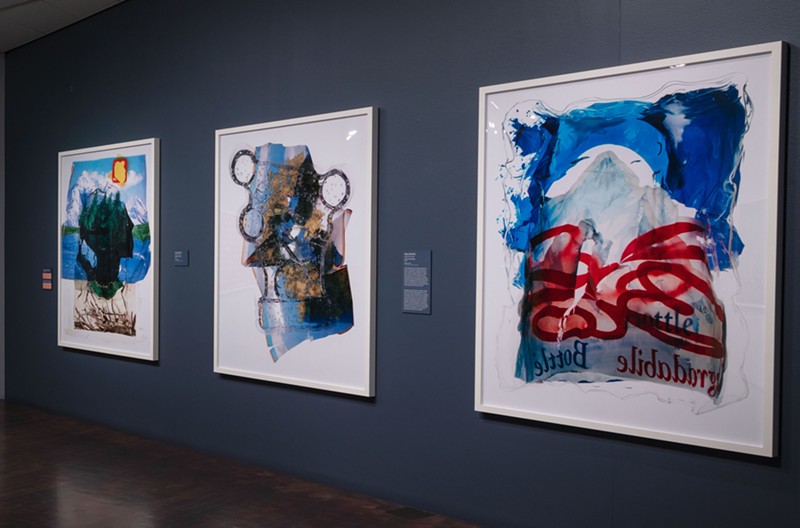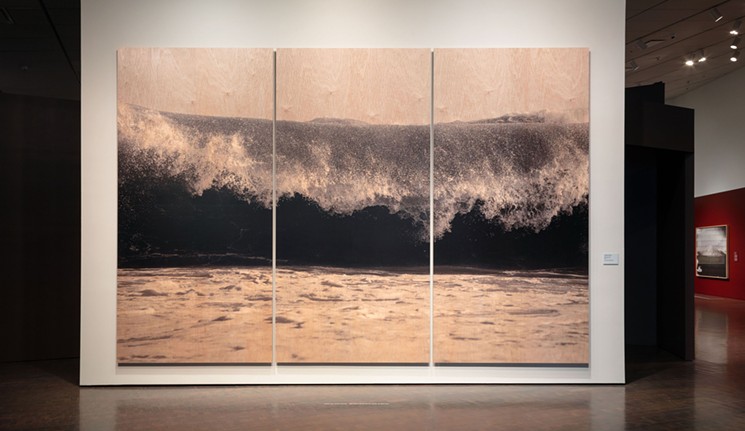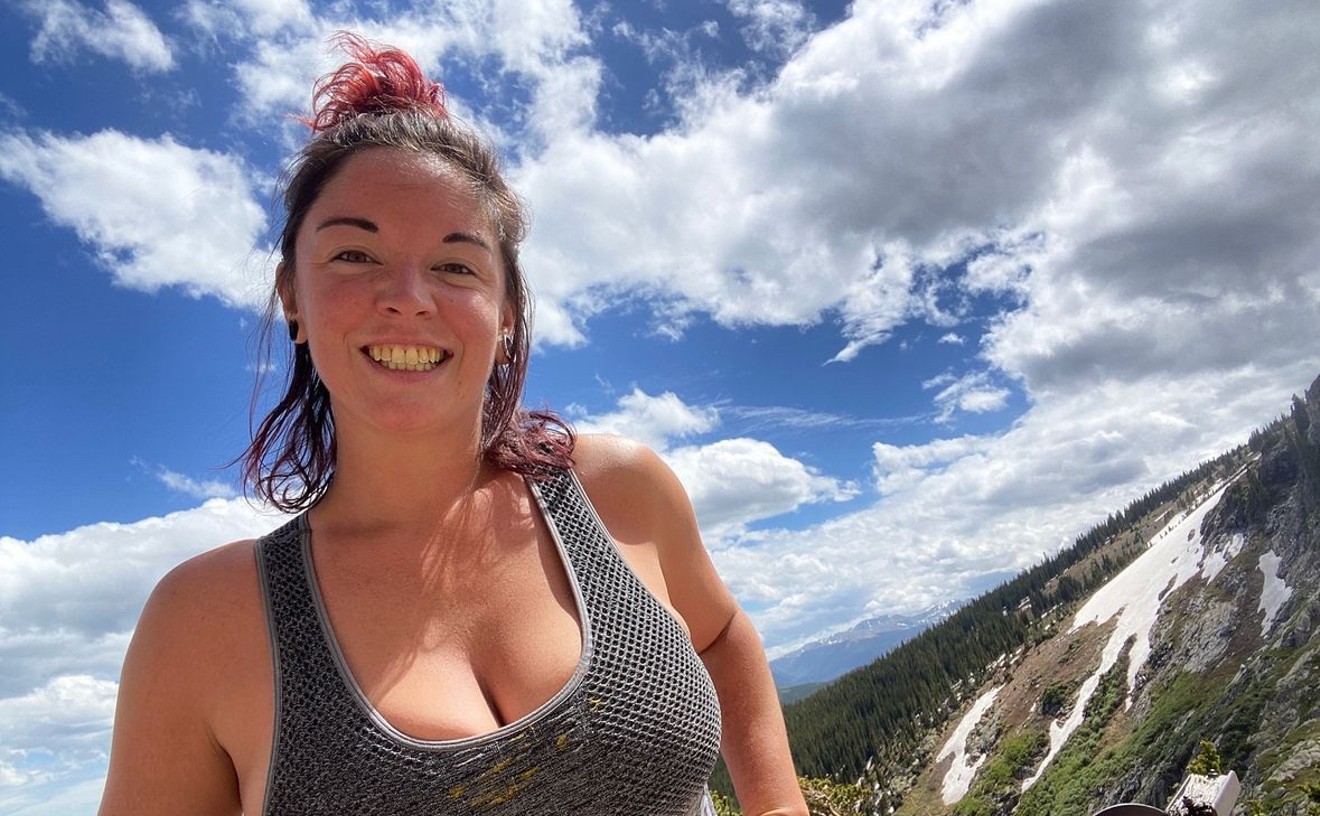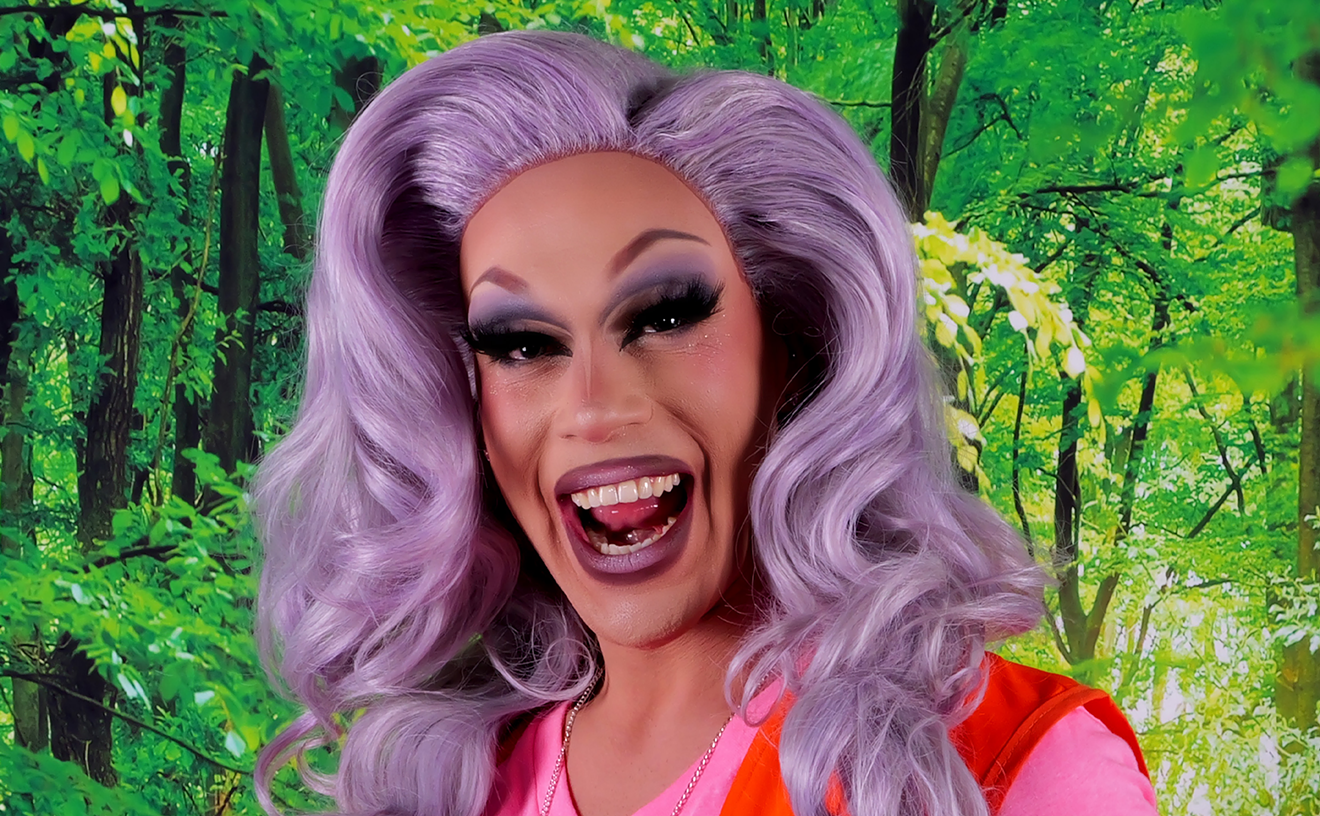Paddock has been thinking about this show for several years and looked at the work of hundreds of artists before he selected the forty or so who made the final cut. New Territory does not focus on artists who depict familiar Western landscapes, as you might expect, but instead includes an international roster of participants, only a few of them genuinely famous, who capture scenes from around the world. Most of the works represent varied musings on neo-pictorialism, with the photos taking a page from painting in different ways, but typically by softening the forms. But there’s also a neo-new topographic interlude, and conceptual photos that resemble abstractions are displayed throughout. Regardless of the stylistic signature of a particular piece, Paddock is interested in unusual techniques; since everyone has a cell phone, pretty much everyone is now a photographer, he notes, and he wanted to include work clearly outside that current craze.
Unusual methods and the tilt toward neo-pictorialism are evident from the start. Clifford Ross’s gigantic triptych “Wood Wave XLIX” hangs facing the entrance to the Anschutz Gallery on the Hamilton’s second floor; it depicts a storm-driven ocean wave that’s splayed across three vertical panels covered in maple veneers. The grain of the maple shows through the image, pushing it out of focus. Ross developed special equipment to print these images digitally onto the wood, and the result is absolutely majestic. Around the corner, a similar painterliness is seen in the Abelardo Morell photos of national parks. To create these, Morell constructed a dome-like camera obscura surmounted by a prism, so that not only is the surrounding view brought in to the image, but so is the reflection of the ground on which the camera was erected. The photos record the famous views, but they’ve been pocked by the gravel on the ground, so they look sort of impressionistic.
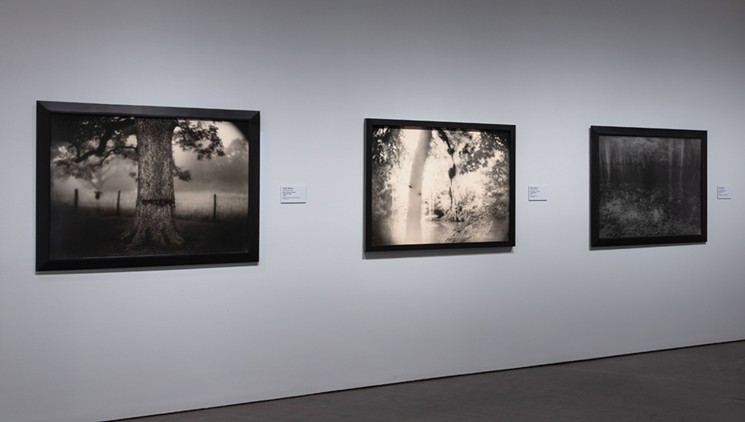
Installation view of three Sally Mann photographs from her "Deep South" series.
Courtesy of the Denver Art Museum
Though far outnumbered by pictorial-related material, there’s a good showing of photos that can be linked back to the new topographic, though most of these have a conceptual twist. Nate Larson and Marni Shindelman’s photos of mundane locations, for example: The artists use Geolocator to find the origin of a Twitter post, photograph the place, then insert the text of the tweet below its matching image. Gregory Crewdson’s “Untitled (Brief Encounter)” looks like a postcard-worthy small-town winter scene, but it’s been completely staged by the artist, who had the street blocked off, hired models and rented old cars to completely control a picture that seems completely candid. Also riffing on the new topographic are Valérie Anex’s empty house, Robert Voit’s cell-phone tower disguised as a cactus, and Richard Misrach’s chillingly refined shot of a sample of Trump’s border wall that resembles a minimalist sculpture.

Installation view of Matthew Brandt's triptych, "Lake Isabella CA TC 2."
Courtesy of the Denver Art Museum
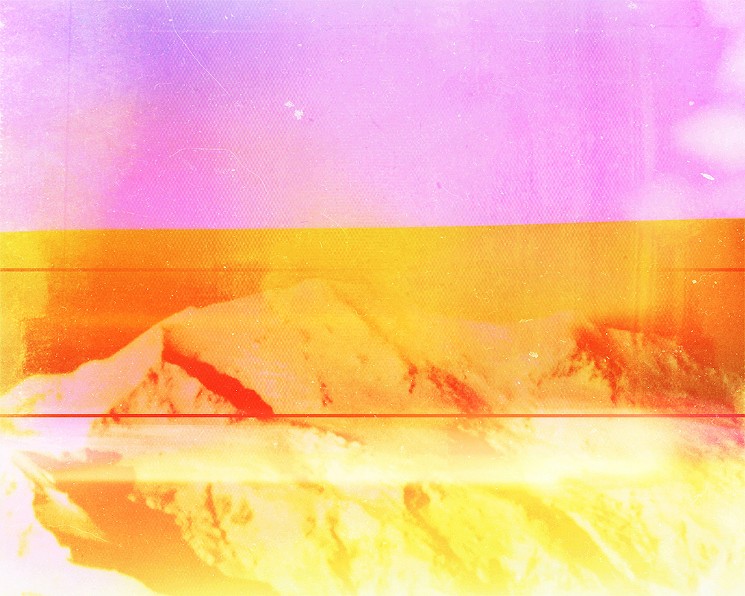
Penelope Umbrico, "Adams with Grunge IntensePeach Pop...."
Courtesy of David B. Smith Gallery, Bruce Silverstein and the artist. copyright Penelope Umbrico
Still, the show is spectacular as it stands, with Paddock’s relentlessly stunning selections revealing that he’s a true connoisseur with an unerring eye for beauty.
New Territory: Landscape Photography Today, through September 16, Denver Art Museum, 100 West 14th Avenue Parkway, 720-913-0131, denverartmuseum.org.

